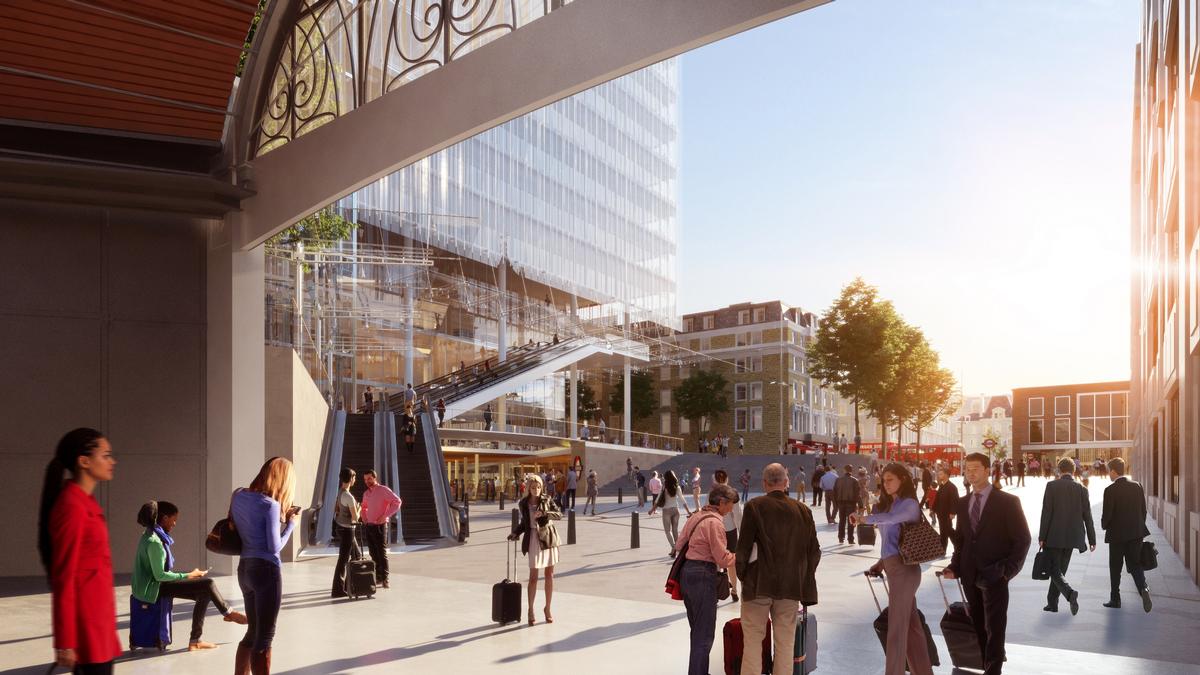see all jobs
Heritage charity warns councils against seductive power of CGI building images
A British heritage charity has warned that council planning committees are too easily seduced by glitzy computer-generated images of buildings they’re tasked with approving or rejecting.
According to the Telegraph newspaper, Marcus Binney of Save Britain's Heritage argued that such images rarely show the reality of how the building will appear and be used in reality.
"[Developers] lavish large amounts of money on producing these images, and they're very persuasive,” he is quoted as saying. “People have got to be suspicious of images of people drinking espressos under nice awnings.”
Binney highlighted Renzo Piano's contentious Paddington Cube’ development as a case in point, arguing the renderings of the scheme, showing sunlight streaming through the site, are misleading as lifts and a fire escape would block the light.
In response, Westminster City Council's cabinet member for planning and public realm, Cllr Daniel Astaire, said: “Council planning decisions are judged on each development’s individual merits, taking account of all the benefits a proposal brings to the city, its people and economy. We do not grant permission based on computer generated concepts.”
Save Britain's Heritage also stated that two other UK projects – The Saffron Tower in Croydon and Lincoln Plaza on the Isle of Dogs – had been promoted with attractive visualisations, but went on to be nominated for the 2016 Carbuncle Cup, an award for the UK's ugliest building.
Eric de Broches des Combes, a leading creator of computer images for architects, recently told CLAD that “a rendering is not a picture, but an illustration,” and should be considered in its proper context.
“Architecture is an act of convincing,” he said. “It’s a very political act and visualisations are part of the whole vocabulary. A rendering is a guide, and if it’s used correctly by someone with a conscience, it should be a good way to illustrate their vision.
“The problem is that the people who are looking at drawings know nothing about what goes into architecture. They don’t want to read plans or sections. They just want to see a picture of people wandering around a building with balloons and happy kids. This is where simplification comes from. Renderings are not a replacement for detailed plans, they just provide an illustration.
“Our aim is, of course, to convince people [about a building], but it’s our philosophy that we won’t lie. Anything depicted in the rendering should be something that could happen for real. If I don’t feel it is, I’ll discuss that with the client.”
The Paddington Cube is likely to go ahead, with British communities secretary Sajid Javid last week deciding not to block the mixed-use scheme. He said the fate of the project “should be determined by the local planning authority,” which supports it.
More News
- News by sector (all)
- All news
- Fitness
- Personal trainer
- Sport
- Spa
- Swimming
- Hospitality
- Entertainment & Gaming
- Commercial Leisure
- Property
- Architecture
- Design
- Tourism
- Travel
- Attractions
- Theme & Water Parks
- Arts & Culture
- Heritage & Museums
- Parks & Countryside
- Sales & Marketing
- Public Sector
- Training
- People
- Executive
- Apprenticeships
- Suppliers
















































